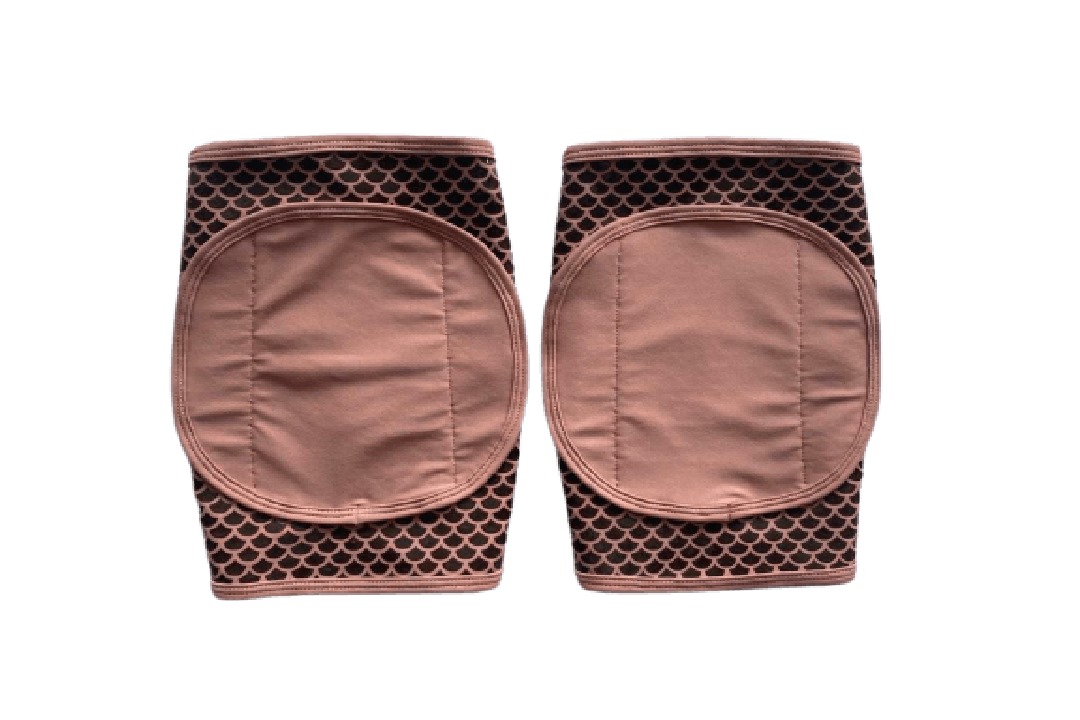HEALTH
How Poor Hygiene and Unsanitary Conditions in Nursing Homes Can Lead to Wrongful Death

Ensuring proper hygiene in nursing homes is not just important, it’s a matter of life and death for the residents. Elderly individuals, especially those with weakened immune systems, are at a higher risk of contracting infections and diseases due to unsanitary conditions. Therefore, it’s imperative that nursing homes maintain rigorous cleanliness standards to safeguard residents from avoidable health hazards.
Unfortunately, not all nursing homes adhere to these standards, leading to dangerous environments where infections can easily spread. When poor hygiene results in serious illness or death, families may need to consult a lawyer for wrongful death lawsuits to hold the facility accountable.
Common Unsanitary Conditions Found in Nursing Homes
Unsanitary conditions in nursing homes are a serious concern, as they can lead to significant health risks for residents. Here are some common unsanitary conditions often found in these facilities:
- Unclean living spaces: This includes dirty floors, bedding, and furniture, which can harbor bacteria and viruses, increasing the risk of infections.
- Improper waste handling: Failure to properly dispose of waste, including soiled linens, diapers, and medical waste, can create hazardous environments.
- Inadequate sterilization of medical equipment: If medical tools and devices are not properly cleaned and sterilized, they can become a source of infection for residents.
- Poor hygiene practices: Staff may neglect basic hygiene practices, such as washing hands or changing gloves between residents, leading to the spread of illness.
- Contaminated food and water: Unsanitary kitchen practices or unclean water sources can expose residents to foodborne illnesses or pathogens.
- Neglect of personal care: Residents may not receive adequate assistance with bathing, grooming, and other personal care tasks, leading to poor hygiene and health complications.
The Impact of Infections on Vulnerable Residents
Infections that might be mild for a healthy individual can be life-threatening for elderly nursing home residents. Conditions like bedsores, respiratory diseases, and gastrointestinal illnesses can quickly escalate, leading to severe complications or death. Poor hygiene practices and overcrowded living conditions within the facility often exacerbate the spread of these infections.
The consequences of such infections can be devastating. Families who lose a loved one due to an illness contracted in a nursing home may be left with questions and a deep sense of loss. In such cases, pursuing legal action with the help of a specialized attorney can provide a pathway to justice and accountability.
Legal Responsibilities of Nursing Homes
Nursing homes are legally obligated to provide residents with a safe and sanitary environment. This includes regular cleaning, proper waste disposal, and ensuring that staff are trained in hygiene practices. Failure to meet these responsibilities can be considered negligence, especially if it results in the death of a resident.
When a nursing home fails in its duty of care, legal action may be necessary to address the wrongdoing. Families affected by such negligence can seek an attorney’s expertise to explore their legal options and pursue compensation for their loss.
Signs of Neglect and Unsanitary Conditions
Family members should be aware of the signs of neglect and unsanitary conditions in nursing homes. These may include unexplained weight loss, frequent infections, dirty or unkempt living spaces, and a general lack of cleanliness in common areas. Regular visits and open communication with staff can help families monitor the quality of care their loved ones receive.
If neglect is suspected, it’s important to document and report any concerns to the appropriate authorities. In cases where poor hygiene leads to serious illness or death, legal action may be warranted to hold the nursing home accountable for its negligence.
The Role of Staff Training and Oversight
Proper staff training and oversight are essential to maintaining a clean and safe environment in nursing homes. Staff must be educated on the importance of hygiene, infection control, and the specific needs of elderly residents. Regular training updates and strict adherence to cleanliness protocols can prevent the spread of infections and ensure the well-being of residents.
When staff are inadequately trained or when there is a lack of oversight, the risk of unsanitary conditions increases significantly. Nursing homes that fail to provide adequate training or supervision may be held liable for any resulting harm to residents, especially in cases of wrongful death.
The Role of Family Vigilance in Preventing Neglect
It’s important for family members to regularly visit their loved ones in nursing homes and closely observe the living conditions. By keeping open communication with the staff and their loved ones, families can quickly address any concerns and make sure the nursing home meets necessary care standards. It’s crucial for family members to also keep an eye on the living environment and the resident’s overall well-being to prevent issues from escalating.
If family members notice ongoing hygiene problems, such as dirty bedding, unclean common areas, or a decline in personal care, they should not hesitate to speak up. If neglect persists despite repeated complaints, it may be necessary to escalate the matter to higher authorities or consider legal action to ensure the resident’s safety and dignity.
Seeking Justice After a Tragic Loss
The loss of a loved one due to poor hygiene and unsanitary conditions in a nursing home is a tragic and preventable event. Families who experience such a loss are often left grappling with grief and anger, seeking answers about how their loved one’s death could have been avoided. Pursuing legal action can be an essential step in holding the responsible parties accountable and ensuring that other residents do not suffer the same fate.
Consulting with an attorney can provide families with the guidance and support they need during this difficult time. A successful lawsuit can lead to compensation for medical expenses, funeral costs, and emotional distress, as well as potential changes in the nursing home’s practices to prevent future tragedies.
Empowering Families to Demand Better Nursing Home Care
Dealing with the repercussions of losing a loved one due to poor hygiene and unsanitary conditions in a nursing home can be extremely difficult. However, this heartbreaking situation can also be a strong motivator for change. Families, together with advocates, can channel their grief into a powerful force for improving nursing home care by advocating for stricter regulations, better staff training, and more thorough inspections.
By holding these facilities accountable, they are seeking justice for their loved ones and working to raise the standard of care for all residents. Taking this proactive approach against neglect can help prevent similar tragedies from happening to future residents, ensuring that nursing homes are safe and respectful environments. Through advocacy, families can turn their loss into long-lasting reform, making a meaningful impact in the fight for better elder care.
HEALTH
Knee Pads for Pole Dancing: Features of Choosing for Professional Dancers

Pole dancing has evolved into a demanding sport that requires a combination of flexibility, strength, and control. For professional dancers, protection during intense training sessions is just as essential as technique. One of the most crucial accessories for safety and performance enhancement is the knee pad. The right pair can make the difference between smooth movement and painful bruises. Understanding how to select the best knee pads for pole dancing ensures both comfort and confidence during every spin, slide, and drop.
Why Knee Pads Are Essential for Pole Dancing
Knee pads are not just for beginners. Even experienced pole dancers rely on them to protect joints from impact and friction burns. The repetitive contact with hard surfaces and the pole itself can lead to discomfort or even long-term injuries if proper protection isn’t used. Professional-grade knee pads are designed to absorb shock while maintaining a sleek, flexible fit that allows dancers to transition seamlessly from floorwork to pole tricks. Unlike typical sports knee pads, those made for pole dancing feature a balance between grip and glide. Dancers need to maintain contact with the floor during choreography but also require traction to hold positions. This is why materials matter — from soft neoprene blends to high-density foam padding — each element contributes to both protection and mobility. An excellent example of high-quality pole dance protection can be found in the grip enhanced knee pads from QueenWear, designed specifically for dancers who value durability and functionality in every movement. These pads combine advanced cushioning with a secure grip surface, ensuring dancers can move freely without compromising safety.
Key Features to Look For in Professional Knee Pads
When choosing knee pads for pole dancing, professional performers should consider several critical factors. First is fit and flexibility — pads that are too tight can restrict movement, while loose ones can slip during routines. A contoured, anatomical design allows the knee pad to move naturally with the body, providing continuous coverage throughout all stages of motion.
Next, consider the level of grip. Some routines demand more floor traction, while others need smoother slides for artistic effect. The ideal knee pad offers interchangeable or dual-surface options, allowing dancers to adjust to different choreography needs. Breathable materials are also key; since pole dance sessions can be intense, sweat-wicking fabrics help maintain comfort during long rehearsals. Aesthetic value is another overlooked but important aspect. Dancers often perform in front of audiences, and knee pads should complement the costume rather than distract from it. Modern designs now offer stylish cuts and colors that merge seamlessly with pole wear outfits, making them both practical and visually appealing. For those building a complete pole dance wardrobe, it’s worth noting that stylish and durable dancewear can also be found at queenwearOfficial, where function meets fashion for every level of performer.
How to Choose Based on Skill and Style
Professional dancers often have different needs depending on their discipline. Contemporary pole artists who combine acrobatics with expressive floorwork may prefer softer padding with maximum flexibility. Exotic pole dancers, on the other hand, usually favor knee pads with stronger grip for better control during transitions and body rolls. Beginners should focus on protection and comfort first, while advanced dancers may prioritize thin, low-profile pads that provide freedom of movement and enhance the aesthetic flow of their performance. In addition, dancers should test their pads in motion before committing to a specific model. Practicing spins, drops, and crawls helps determine whether the padding thickness and grip meet personal comfort and performance standards. Regular maintenance, such as cleaning and checking for wear, will extend the lifespan of the pads and keep them hygienic for studio use.
Choosing knee pads for pole dancing is not only about safety — it’s about optimizing artistry. With the right pair, every dancer can train harder, perform longer, and express movement with confidence and grace.
HEALTH
BCBS of TX + HSA: The Perfect Pair for Affordable Healthcare Coverage

As healthcare costs continue to rise in 2025, Texas residents and businesses are seeking innovative ways to manage expenses without sacrificing quality coverage. Pairing BCBS of TX with HSA Insurance offers a powerful solution, combining the reliability of Blue Cross Blue Shield’s extensive network with the tax advantages and flexibility of a Health Savings Account (HSA). This combination is particularly appealing for individuals, families, and small businesses in Texas looking to optimize healthcare spending while maintaining access to top-tier providers. This article explores why this pairing is ideal, how it works, and practical steps to maximize its benefits.
Dive deeper—this related read builds on what you just discovered
Understanding BCBS of Texas High Deductible Plans
Blue Cross Blue Shield of Texas (BCBS of TX) offers a range of high-deductible health plans (HDHPs) that qualify for HSA use, making them a cornerstone of cost-effective healthcare. For 2025, IRS guidelines define HDHPs as plans with minimum deductibles of $1,650 for individuals and $3,300 for families, with out-of-pocket maximums capped at $8,050 and $16,100, respectively. BCBS of TX plans, such as the Blue Advantage HMO or Blue Choice PPO, meet these criteria, offering access to over 50,000 providers across Texas and streamlined claims processing.
A key feature of BCBS HDHPs is their coverage of preventive care at 100% before the deductible is met. This includes annual checkups, vaccinations, and screenings like mammograms, ensuring Texans can prioritize wellness without upfront costs. Premiums for these plans are typically 20-40% lower than traditional low-deductible plans, with monthly costs for a family averaging $500-$700 compared to $800-$1,000 for non-HDHPs, based on 2025 market data. This reduction frees up funds for HSA contributions, creating a financial buffer for out-of-pocket expenses.
BCBS of TX also offers robust telehealth services and prescription drug coverage, which pair well with HSAs for managing routine costs. The plans’ flexibility across urban and rural Texas ensures accessibility, whether in Houston or smaller communities. For small businesses or individuals, exploring options through BCBS of TX provides a tailored approach to affordable coverage.
Why Adding an HSA Can Cut Your Out-of-Pocket Costs
An HSA transforms how Texans manage healthcare expenses by offering a triple tax advantage: contributions are tax-deductible, funds grow tax-free, and withdrawals for qualified medical expenses—like copays, prescriptions, or dental care—are tax-free. In 2025, individuals can contribute up to $4,300, families up to $8,550, with an additional $1,000 catch-up for those 55 and older. For a family in a 22% tax bracket, maxing out an HSA saves approximately $1,880 in federal taxes, plus potential state tax reductions.
Pairing an HSA with a BCBS of TX HDHP amplifies savings. The lower premiums of HDHPs—often 30% less than traditional plans—allow individuals or employers to fund HSAs with the difference. For example, a family saving $300 monthly on premiums could redirect $3,600 annually to an HSA, covering most or all of their deductible. Studies show HSA users spend 10-15% less on healthcare due to price shopping, such as choosing generic drugs or negotiating provider rates.
HSA for America Blog also offer long-term benefits. Unlike FSAs, funds roll over indefinitely and can be invested in stocks, bonds, or mutual funds, similar to a 401(k). For instance, a 40-year-old contributing $4,000 annually at a 5% return could amass over $150,000 by age 65, per financial projections. This makes HSAs a dual-purpose tool: immediate expense coverage and future financial security. For Texans with BCBS plans, HSAs provide a safety net for deductibles while preserving access to BCBS’s extensive network.
How to Combine BCBS and HSA Benefits
Integrating a BCBS of TX HDHP with an HSA is straightforward and maximizes both coverage and savings:
- Enroll in a BCBS HDHP: Confirm the plan meets HSA requirements. Use BCBS of TX resources or a broker to select a plan suited to your needs, considering network size and telehealth options.
- Open an HSA: Choose a provider like Fidelity, HealthEquity, or a local bank offering no-fee accounts with investment options. Link the HSA to your BCBS plan for seamless expense tracking.
- Fund the Account: Contribute via payroll deductions (pre-tax for employees) or direct deposits. Employers can match contributions, enhancing benefits. For example, a $2,000 employer contribution saves $440 in employee taxes (22% bracket) and $610 in employer payroll taxes.
- Use HSA Funds: Pay for qualified expenses—copays, prescriptions, or even LASIK—using an HSA debit card or reimbursement. BCBS covers post-deductible costs, ensuring comprehensive care.
- Monitor and Invest: Track expenses via HSA apps and invest surplus funds for growth. Unused funds remain yours, unlike traditional plan benefits.
For setup guidance, HSA for America offers tools like calculators and expert consultations to simplify the process. Small businesses can streamline group HSAs, while individuals can explore plans tailored to Texas’s diverse healthcare landscape.
Tips for Managing Your HSA Efficiently
Maximizing an HSA with a BCBS of TX plan requires strategic management:
- Maximize Contributions: Contribute the full $4,300/$8,550 limit if possible to maximize tax savings. Even partial contributions, like $100/month, build a buffer.
- Invest Early: Many HSA providers offer investment options after a minimum balance (e.g., $1,000). A diversified portfolio can yield 4-6% annually, compounding over time.
- Track Expenses: Use HSA apps or online portals to log qualified expenses, ensuring compliance with IRS rules. Keep receipts for audits.
- Leverage Preventive Care: BCBS HDHPs cover screenings and vaccines pre-deductible, reducing HSA withdrawals for routine care.
- Plan for the Future: After age 65, HSA funds can cover Medicare premiums (not Medigap) or non-medical expenses with only income tax, no penalty.
- Seek Expert Guidance: Resources like HSA for America provide free quotes, webinars, and advisors to optimize your HSA strategy.
Regularly review your HSA balance and healthcare needs during open enrollment to adjust contributions or investments. For Texans, this ensures alignment with BCBS’s robust coverage, from specialists in Dallas to rural clinics.
Conclusion
Pairing BCBS of TX with HSA Insurance is a smart strategy for affordable healthcare in 2025. The combination leverages BCBS’s trusted network and low-premium HDHPs with HSA’s tax advantages and flexibility, offering Texans financial control and peace of mind. Whether you’re an individual, family, or small business owner, this approach reduces out-of-pocket costs while maintaining access to quality care. Explore options with HSA for America to customize your plan and start saving today.
Don’t miss our top pick—featured content worth your time
HEALTH
How Organic Allulose Syrup Improves Beverage Formulations

In today’s beverage industry, innovation is driven by one word: health. Consumers are moving away from sugar-loaded drinks and artificial sweeteners, seeking natural alternatives that offer great taste without guilt Organic Allulose Syrup. Beverage manufacturers now face the challenge of creating low-calorie, functional, and clean-label beverages that satisfy both the palate and the conscience.
One ingredient that is rapidly redefining this category is organic allulose syrup—a naturally derived sweetener with sugar-like taste, superior solubility, and minimal calories. As a result, it is becoming a preferred ingredient for brands looking to meet consumer demand for better-for-you beverages without sacrificing taste or functionality.
One more read that ties it all together — check out this related story.
1. Natural Sweetness with a Healthier Profile
Organic allulose syrup provides around 70% of the sweetness of sucrose, yet contains less than one-tenth of the calories—approximately 0.4 kcal per gram compared to sugar’s 4 kcal per gram.
This unique profile allows beverage manufacturers to maintain the taste consumers love while drastically reducing caloric content. Unlike other low-calorie sweeteners that often leave a lingering bitterness or metallic aftertaste, organic allulose syrup offers a clean, natural sweetness very close to that of cane sugar.
Because it is metabolized differently by the human body, it contributes almost no usable energy, making it suitable for low-sugar, keto, diabetic-friendly, and weight-management beverages.
For example, a functional juice or ready-to-drink tea formulated with organic allulose syrup can deliver authentic sweetness and clean flavor while staying within the nutritional parameters of modern health-conscious consumers.
2. Excellent Solubility and Stability in Beverages
Formulation performance is as important as taste. Beverage applications require ingredients that blend smoothly, remain stable under heat or acid, and do not alter product texture or clarity.
Organic allulose syrup demonstrates exceptional solubility and thermal stability, dissolving easily in both cold and hot liquids. It maintains consistent sweetness and viscosity even after pasteurization or sterilization, making it ideal for a wide range of beverages—from carbonated soft drinks and fruit juices to functional sports beverages and ready-to-drink coffees.
Its stable performance helps manufacturers achieve uniform sweetness, improved mouthfeel, and consistent product quality during large-scale production.
3. Clean Label and Organic Certification
Modern consumers are increasingly skeptical of artificial ingredients and synthetic additives. They are reading labels closely, preferring beverages that are organic, natural, and transparently sourced.
Organic allulose syrup supports this clean-label movement perfectly. Derived from natural sources such as figs, jackfruit, and raisins, it can be certified organic and non-GMO, offering manufacturers a transparent, sustainable sweetening solution.
Its plant-based origin also aligns with the vegan and eco-friendly positioning that many beverage brands are now emphasizing. This allows companies to use organic allulose syrup not only as a functional ingredient but also as a marketing advantage, appealing to premium and health-focused consumers alike.
4. Ideal for Functional and Keto-Friendly Drinks
The global market for functional beverages—those fortified with proteins, fibers, or botanical extracts—is expanding rapidly. However, many of these drinks struggle with taste balance, as natural ingredients can create bitterness or off-notes when sugar is reduced.
Here, organic allulose syrup acts as an ideal flavor balancer, masking bitterness and improving mouthfeel without adding unwanted calories or carbohydrates.
Moreover, it has a low glycemic index and does not raise blood sugar or insulin levels, making it a keto-compliant and diabetic-safe ingredient. Beverage formulators can pair it with prebiotic fibers, electrolytes, or plant-based proteins to create drinks that are both functional and enjoyable.
5. Versatility Across Beverage Categories
The applications of organic allulose syrup in beverage manufacturing are extensive. It can be used in:
- Carbonated soft drinks: Provides smooth sweetness and balanced mouthfeel without sugar spikes.
- Juice blends and smoothies: Enhances fruit flavor while reducing calorie content.
- Sports and energy drinks: Offers quick sweetness with excellent solubility and stability.
- Ready-to-drink teas and coffees: Ensures a consistent sweetness and clean aftertaste.
- Plant-based and dairy alternatives: Improves body, texture, and overall flavor balance.
This versatility allows formulators to replace sugar or artificial sweeteners in almost any beverage category while maintaining sensory and physical properties.
6. Sustainability and Consumer Trust
Beyond performance, organic allulose syrup contributes to the sustainability narrative that is shaping the beverage industry. Its organic certification, plant-based origin, and environmentally friendly production process resonate strongly with today’s conscious consumers.
By using organic allulose syrup, beverage brands can enhance product transparency, reduce environmental impact, and reinforce consumer trust—essential elements in building long-term brand value.
Organic allulose syrup is redefining what’s possible in beverage formulation. It combines natural sweetness, calorie reduction, clean-label appeal, and technical versatility—a rare combination that enables beverage manufacturers to innovate confidently in the fast-growing health and wellness market.
At ORGANICWAY, we provide high-purity, certified organic allulose syrup tailored for beverage manufacturers worldwide. Whether you’re developing a low-calorie juice, a functional sports drink, or a premium plant-based beverage, our syrup ensures consistent quality and superior performance.
Contact ORGANICWAY today to request samples or discuss bulk supply options for your next beverage formulation project.
Explore more insights and uncover hidden gems you haven’t seen yet.

 GENERAL4 months ago
GENERAL4 months ago5 Factors That Affect Tattoo Removal Success

 ENTERTAINMENT1 day ago
ENTERTAINMENT1 day agoExploring the Kristen Archives: A Treasure Trove of Erotica and More

 LIFESTYLE8 months ago
LIFESTYLE8 months agoThe Disciplinary Wives Club: Spanking for Love, Not Punishment

 TECHNOLOGY8 months ago
TECHNOLOGY8 months agoBlog Arcy Art: Where Architecture Meets Art

 LIFESTYLE1 month ago
LIFESTYLE1 month agoWho Is Sandra Orlow?

 ENTERTAINMENT10 months ago
ENTERTAINMENT10 months agoThe Ultimate Guide to Shillong Teer Hit Number: How to Predict Your Next Win

 LIFESTYLE4 weeks ago
LIFESTYLE4 weeks agoWho Is Wife Crazy Stacie

 LIFESTYLE3 weeks ago
LIFESTYLE3 weeks agoBerniece Julien: The Private Life of Tyson Beckford’s Partner











